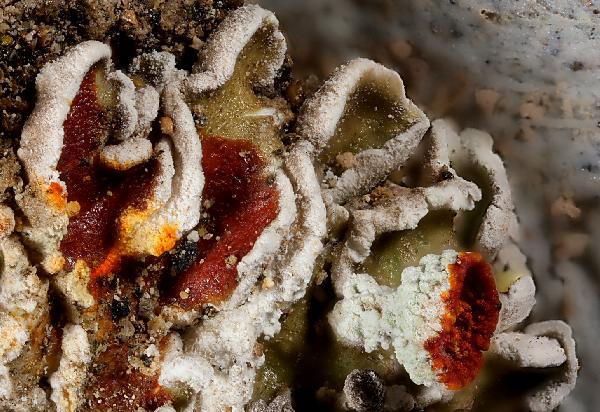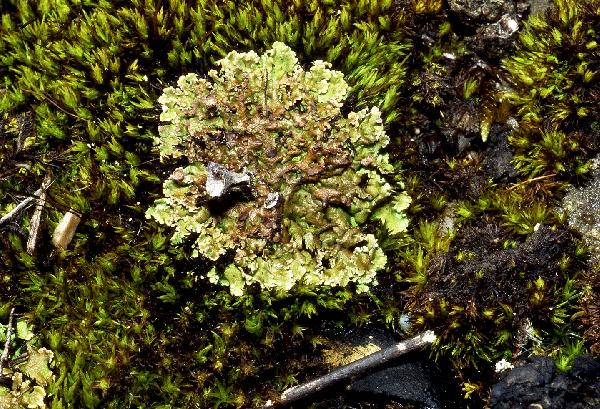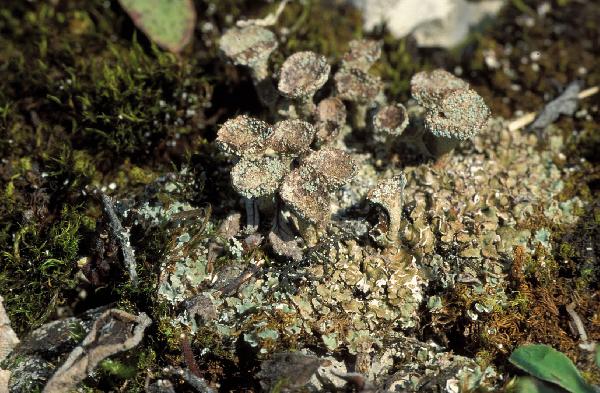Cladonia pyxidata (L.) Hoffm. f. pocillum (Ach.) Nyl.
Bull. Soc. Bot. Fr. 10, 5: 259, 1863. Basionym: Baeomyces pocillum Ach. - Meth. Lich.: 336, 1803.
Synonyms: Cladonia pocillum (Ach.) Grognot; Cladonia pyxidata subsp. pocillum (Ach.) Vain.; Cladonia pyxidata var. pocillum (Ach.) Schaer.
Description: Primary thallus squamulose, persistent and prominent, the squamules adnate, middle-sized, 1-5 mm long, 0.3-1(-2) mm thick, flat, forming a subrosulate crust around the base of podetia, brownish to greenish brown above, white below. Podetia funnel-shaped, hollow inside, grey-green to finally brownish, mostly esquamulose, 0.5-3 cm tall, with broad cups gradually tapering into short stalks, regular or rarely proliferating from margin, the cortex disrupted into contiguous to scattered areoles (schizidia), especially inside the cups. Apothecia rare, brown, convex, on the margins of cups. Asci 8-spored, clavate, thickened at apex, with a K/I+ blue tholus and a K/I+ strongly blue outer gelatinous sheath, Cladonia-type. Ascospores 1-celled, hyaline, ellipsoid. Pycnidia brown, on the margins of cups, with a colourless jelly. Conidia cylindrical. Photobiont chlorococcoid. Spot tests: K- or K+ yellowish slowly turning brown, C-, KC-, P+ red, UV-. Chemistry: fumarprotocetraric acid complex.
Growth form: Fruticose
Substrata: soil, terricolous mosses, and plant debris
Photobiont: green algae other than Trentepohlia
Reproductive strategy: mainly sexual
Commonnes-rarity: (info)
Alpine belt: rather common
Subalpine belt: very common
Montane belt: extremely common
Dry submediterranean belt: extremely common
Humid submediterranean belt: extremely common
Padanian area: extremely rare
pH of the substrata:
1 2 3 4 5
Solar irradiation:
1 2 3 4 5
Aridity:
1 2 3 4 5
Eutrophication:
1 2 3 4 5
Poleotolerance:
0 1 2 3
Altitudinal distribution:
1 2 3 4 5 6
Rarity
absent
extremely rare
very rare
rare
rather rare
rather common
common
very common
extremely common
Loading data...
Occurrence data
Predictive map
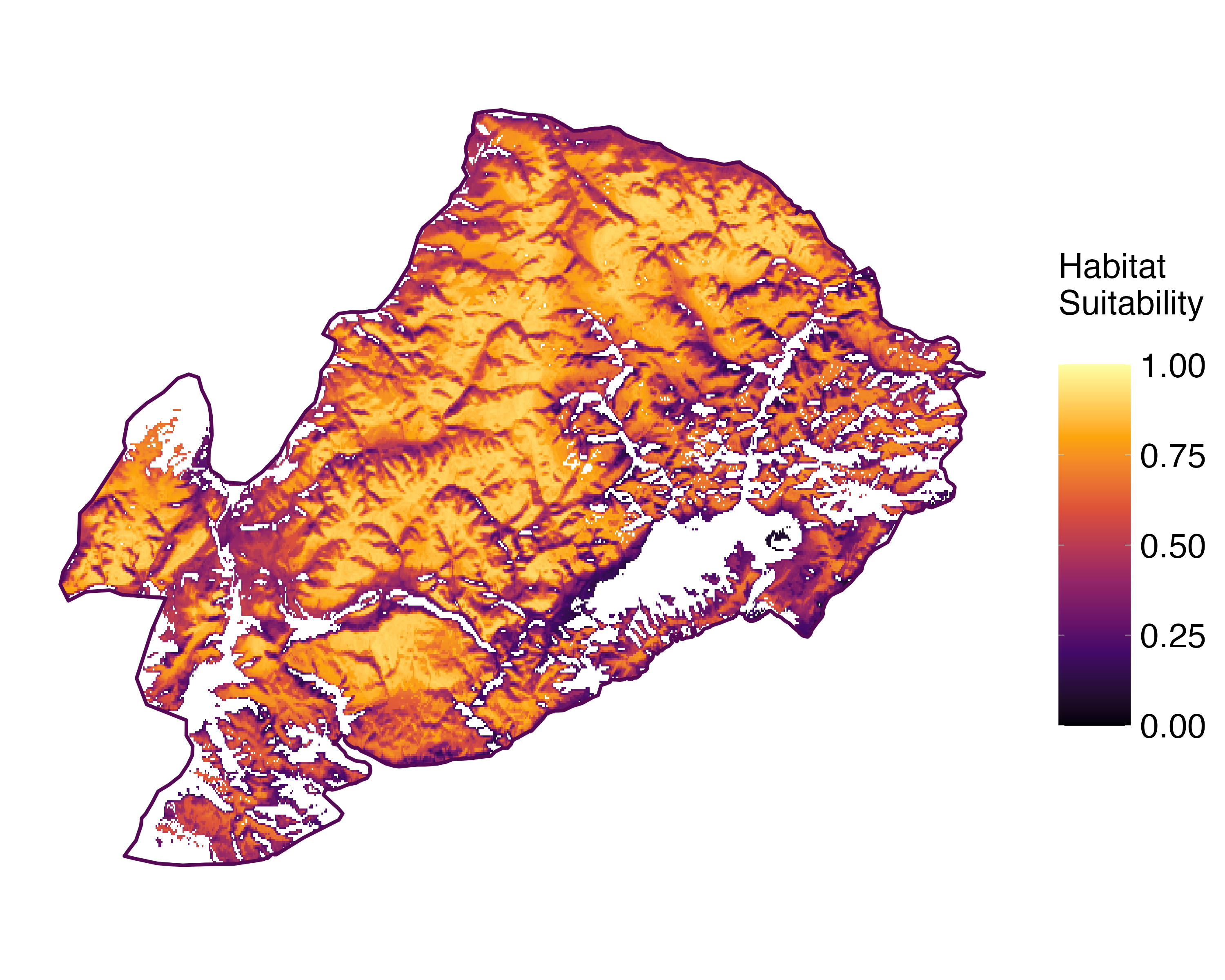 Current prediction (1981-2010)
Current prediction (1981-2010) Future prediction (2071-2100) SSP 1-2.6
Future prediction (2071-2100) SSP 1-2.6 Future prediction (2071-2100) SSP 5-8.5Predictive maps according to Francesconi et al. 2025
Future prediction (2071-2100) SSP 5-8.5Predictive maps according to Francesconi et al. 2025
Felix Schumm – CC BY-SA 4.0
[16545], Germany, Baden-Württemberg, Kreis Heidenheim, östlich von Söhnstetten an der Abzweigung zum Dudelhof. 48,66772° N, 10,00954° E, 570 m. Auf erdigen Kalkblöcken in Kalktrockenrasen. Leg. et det. Schumm 25.07.2010

P.L. Nimis; Owner: Department of Life Sciences, University of Trieste
Herbarium: TSB (10290)
2001/12/04
primary thallus

Felix Schumm – CC BY-SA 4.0
[16545], Germany, Baden-Württemberg, Kreis Heidenheim, östlich von Söhnstetten an der Abzweigung zum Dudelhof. 48,66772° N, 10,00954° E, 570 m. Auf erdigen Kalkblöcken in Kalktrockenrasen. Leg. et det. Schumm 25.07.2010.

Felix Schumm – CC BY-SA 4.0
[16545], Germany, Baden-Württemberg, Kreis Heidenheim, östlich von Söhnstetten an der Abzweigung zum Dudelhof. 48,66772° N, 10,00954° E, 570 m. Auf erdigen Kalkblöcken in Kalktrockenrasen. Leg. et det. Schumm 25.07.2010.

Felix Schumm – CC BY-SA 4.0
[16545], Germany, Baden-Württemberg, Kreis Heidenheim, östlich von Söhnstetten an der Abzweigung zum Dudelhof. 48,66772° N, 10,00954° E, 570 m. Auf erdigen Kalkblöcken in Kalktrockenrasen. Leg. et det. Schumm 25.07.2010.

Felix Schumm – CC BY-SA 4.0
[16545], Germany, Baden-Württemberg, Kreis Heidenheim, östlich von Söhnstetten an der Abzweigung zum Dudelhof. 48,66772° N, 10,00954° E, 570 m. Auf erdigen Kalkblöcken in Kalktrockenrasen. Leg. et det. Schumm 25.07.2010.

Felix Schumm – CC BY-SA 4.0
[16545], Germany, Baden-Württemberg, Kreis Heidenheim, östlich von Söhnstetten an der Abzweigung zum Dudelhof. 48,66772° N, 10,00954° E, 570 m. Auf erdigen Kalkblöcken in Kalktrockenrasen. Leg. et det. Schumm 25.07.2010.

Felix Schumm – CC BY-SA 4.0
[16545], Germany, Baden-Württemberg, Kreis Heidenheim, östlich von Söhnstetten an der Abzweigung zum Dudelhof. 48,66772° N, 10,00954° E, 570 m. Auf erdigen Kalkblöcken in Kalktrockenrasen. Leg. et det. Schumm 25.07.2010.

P.L. Nimis; Owner: Department of Life Sciences, University of Trieste
Herbarium: TSB (10290)
2001/12/04

Courtesy: Olivier et Danièle Gonnet - Source: https://www.afl-lichenologie.fr/Photos_AFL/Photos_AFL_C/Cladonia_pocillum.htm
France, Mont Cenis - Vanoise - Haute-Savoie
30/11/2014

Courtesy: Olivier et Danièle Gonnet - Source: https://www.afl-lichenologie.fr/Photos_AFL/Photos_AFL_C/Cladonia_pocillum.htm
France, Mont Cenis - Vanoise - Haute-Savoie
30/11/2014

Bernard Bouffinier- Source: http://www.lichensmaritimes.org/index.php?task=fiche&lichen=304&lang=en
France, Provence, Mérindol

Bernard Bouffinier- Source: http://www.lichensmaritimes.org/index.php?task=fiche&lichen=304&lang=en
France, Loiret

Bernard Bouffinier- Source: http://www.lichensmaritimes.org/index.php?task=fiche&lichen=304&lang=en
France, La Palue
avec un début de parasitisme par Diploschistes muscorum

Bernard Bouffinier- Source: http://www.lichensmaritimes.org/index.php?task=fiche&lichen=304&lang=en
France, La Palue

Bernard Bouffinier- Source: http://www.lichensmaritimes.org/index.php?task=fiche&lichen=304&lang=en
France, La Palue

Bernard Bouffinier- Source: http://www.lichensmaritimes.org/index.php?task=fiche&lichen=304&lang=en
France, La Palue

Bernard Bouffinier- Source: http://www.lichensmaritimes.org/index.php?task=fiche&lichen=304&lang=en
France, La Palue

Bernard Bouffinier- Source: http://www.lichensmaritimes.org/index.php?task=fiche&lichen=304&lang=en
France, Pyrenees, Cauterets

Bernard Bouffinier- Source: http://www.lichensmaritimes.org/index.php?task=fiche&lichen=304&lang=en
France, Pyrenees, Cauterets
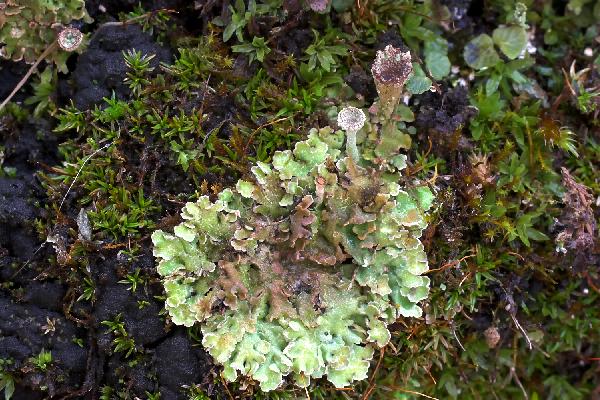
Ulrich Kirschbaum CC BY-SA 4.0 - Source: https://www.thm.de/lse/ulrich-kirschbaum/flechtenbilder
Central Europe; Germany: Hesse.
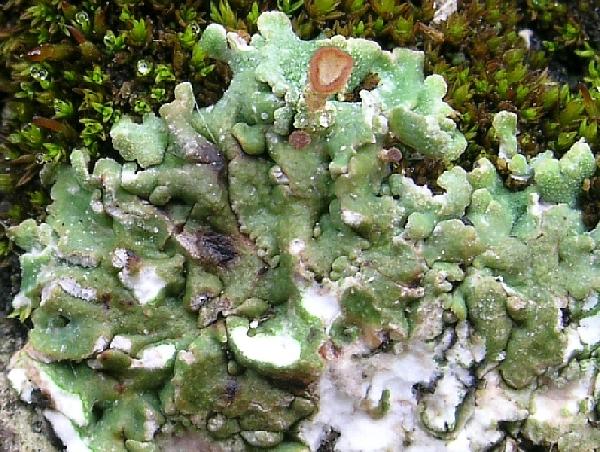
Ulrich Kirschbaum CC BY-SA 4.0 - Source: https://www.thm.de/lse/ulrich-kirschbaum/flechtenbilder
Central Europe; Germany: Hesse.
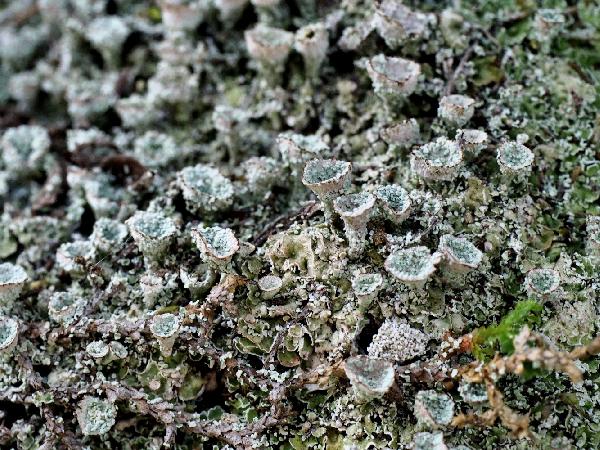
Ulrich Kirschbaum CC BY-SA 4.0 - Source: https://www.thm.de/lse/ulrich-kirschbaum/flechtenbilder
SE-Europe; N-Cyprus; SE of Girne; Beşparmak Mountains; SE of Beylerbeyi (Bellapais)
Growth form: Fruticose
Substrata: soil, terricolous mosses, and plant debris
Photobiont: green algae other than Trentepohlia
Reproductive strategy: mainly sexual
Commonnes-rarity: (info)
Alpine belt: rather common
Subalpine belt: very common
Montane belt: extremely common
Dry submediterranean belt: extremely common
Humid submediterranean belt: extremely common
Padanian area: extremely rare
pH of the substrata:
| 1 | 2 | 3 | 4 | 5 |
Solar irradiation:
| 1 | 2 | 3 | 4 | 5 |
Aridity:
| 1 | 2 | 3 | 4 | 5 |
Eutrophication:
| 1 | 2 | 3 | 4 | 5 |
Poleotolerance:
| 0 | 1 | 2 | 3 |
Altitudinal distribution:
| 1 | 2 | 3 | 4 | 5 | 6 |
Rarity
absent
extremely rare
very rare
rare
rather rare
rather common
common
very common
extremely common
Loading data...
Occurrence data
Predictive map
 Current prediction (1981-2010)
Current prediction (1981-2010) Future prediction (2071-2100) SSP 1-2.6
Future prediction (2071-2100) SSP 1-2.6 Future prediction (2071-2100) SSP 5-8.5
Future prediction (2071-2100) SSP 5-8.5Predictive maps according to Francesconi et al. 2025

Felix Schumm – CC BY-SA 4.0
[16545], Germany, Baden-Württemberg, Kreis Heidenheim, östlich von Söhnstetten an der Abzweigung zum Dudelhof. 48,66772° N, 10,00954° E, 570 m. Auf erdigen Kalkblöcken in Kalktrockenrasen. Leg. et det. Schumm 25.07.2010

P.L. Nimis; Owner: Department of Life Sciences, University of Trieste
Herbarium: TSB (10290)
2001/12/04
primary thallus

Felix Schumm – CC BY-SA 4.0
[16545], Germany, Baden-Württemberg, Kreis Heidenheim, östlich von Söhnstetten an der Abzweigung zum Dudelhof. 48,66772° N, 10,00954° E, 570 m. Auf erdigen Kalkblöcken in Kalktrockenrasen. Leg. et det. Schumm 25.07.2010.

Felix Schumm – CC BY-SA 4.0
[16545], Germany, Baden-Württemberg, Kreis Heidenheim, östlich von Söhnstetten an der Abzweigung zum Dudelhof. 48,66772° N, 10,00954° E, 570 m. Auf erdigen Kalkblöcken in Kalktrockenrasen. Leg. et det. Schumm 25.07.2010.

Felix Schumm – CC BY-SA 4.0
[16545], Germany, Baden-Württemberg, Kreis Heidenheim, östlich von Söhnstetten an der Abzweigung zum Dudelhof. 48,66772° N, 10,00954° E, 570 m. Auf erdigen Kalkblöcken in Kalktrockenrasen. Leg. et det. Schumm 25.07.2010.

Felix Schumm – CC BY-SA 4.0
[16545], Germany, Baden-Württemberg, Kreis Heidenheim, östlich von Söhnstetten an der Abzweigung zum Dudelhof. 48,66772° N, 10,00954° E, 570 m. Auf erdigen Kalkblöcken in Kalktrockenrasen. Leg. et det. Schumm 25.07.2010.

Felix Schumm – CC BY-SA 4.0
[16545], Germany, Baden-Württemberg, Kreis Heidenheim, östlich von Söhnstetten an der Abzweigung zum Dudelhof. 48,66772° N, 10,00954° E, 570 m. Auf erdigen Kalkblöcken in Kalktrockenrasen. Leg. et det. Schumm 25.07.2010.

Felix Schumm – CC BY-SA 4.0
[16545], Germany, Baden-Württemberg, Kreis Heidenheim, östlich von Söhnstetten an der Abzweigung zum Dudelhof. 48,66772° N, 10,00954° E, 570 m. Auf erdigen Kalkblöcken in Kalktrockenrasen. Leg. et det. Schumm 25.07.2010.

P.L. Nimis; Owner: Department of Life Sciences, University of Trieste
Herbarium: TSB (10290)
2001/12/04

Courtesy: Olivier et Danièle Gonnet - Source: https://www.afl-lichenologie.fr/Photos_AFL/Photos_AFL_C/Cladonia_pocillum.htm
France, Mont Cenis - Vanoise - Haute-Savoie
30/11/2014

Courtesy: Olivier et Danièle Gonnet - Source: https://www.afl-lichenologie.fr/Photos_AFL/Photos_AFL_C/Cladonia_pocillum.htm
France, Mont Cenis - Vanoise - Haute-Savoie
30/11/2014

Bernard Bouffinier- Source: http://www.lichensmaritimes.org/index.php?task=fiche&lichen=304&lang=en
France, Provence, Mérindol

Bernard Bouffinier- Source: http://www.lichensmaritimes.org/index.php?task=fiche&lichen=304&lang=en
France, Loiret

Bernard Bouffinier- Source: http://www.lichensmaritimes.org/index.php?task=fiche&lichen=304&lang=en
France, La Palue
avec un début de parasitisme par Diploschistes muscorum

Bernard Bouffinier- Source: http://www.lichensmaritimes.org/index.php?task=fiche&lichen=304&lang=en
France, La Palue

Bernard Bouffinier- Source: http://www.lichensmaritimes.org/index.php?task=fiche&lichen=304&lang=en
France, La Palue

Bernard Bouffinier- Source: http://www.lichensmaritimes.org/index.php?task=fiche&lichen=304&lang=en
France, La Palue

Bernard Bouffinier- Source: http://www.lichensmaritimes.org/index.php?task=fiche&lichen=304&lang=en
France, La Palue

Bernard Bouffinier- Source: http://www.lichensmaritimes.org/index.php?task=fiche&lichen=304&lang=en
France, Pyrenees, Cauterets

Bernard Bouffinier- Source: http://www.lichensmaritimes.org/index.php?task=fiche&lichen=304&lang=en
France, Pyrenees, Cauterets

Ulrich Kirschbaum CC BY-SA 4.0 - Source: https://www.thm.de/lse/ulrich-kirschbaum/flechtenbilder
Central Europe; Germany: Hesse.

Ulrich Kirschbaum CC BY-SA 4.0 - Source: https://www.thm.de/lse/ulrich-kirschbaum/flechtenbilder
Central Europe; Germany: Hesse.






